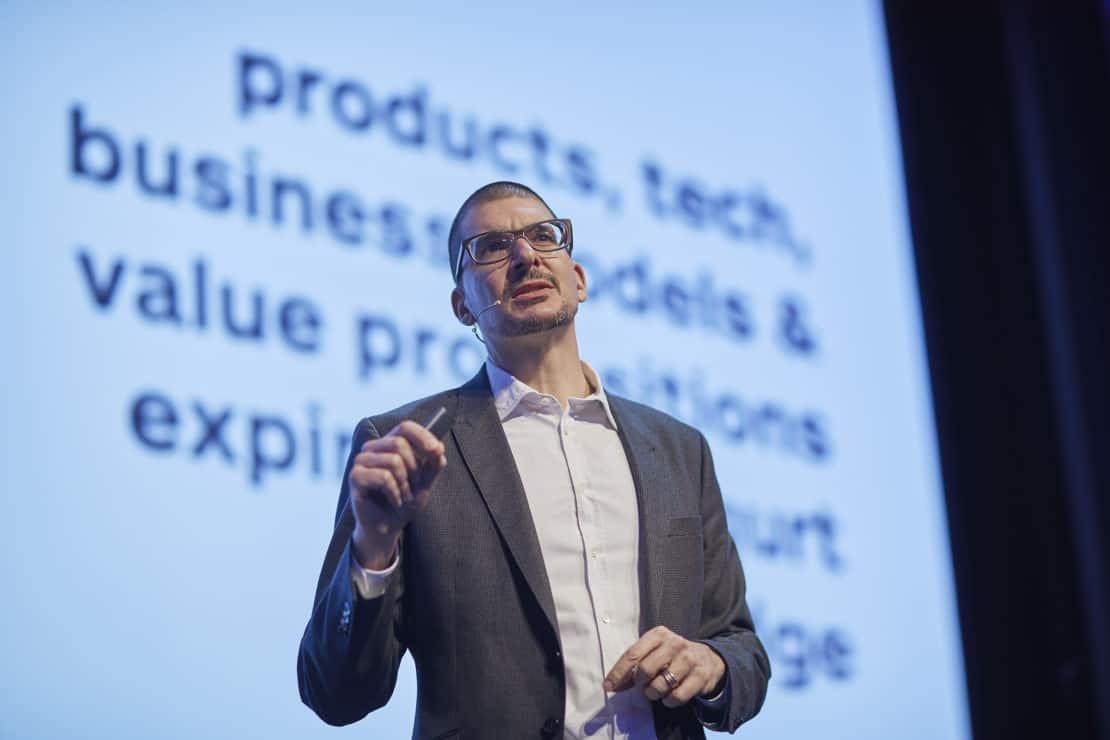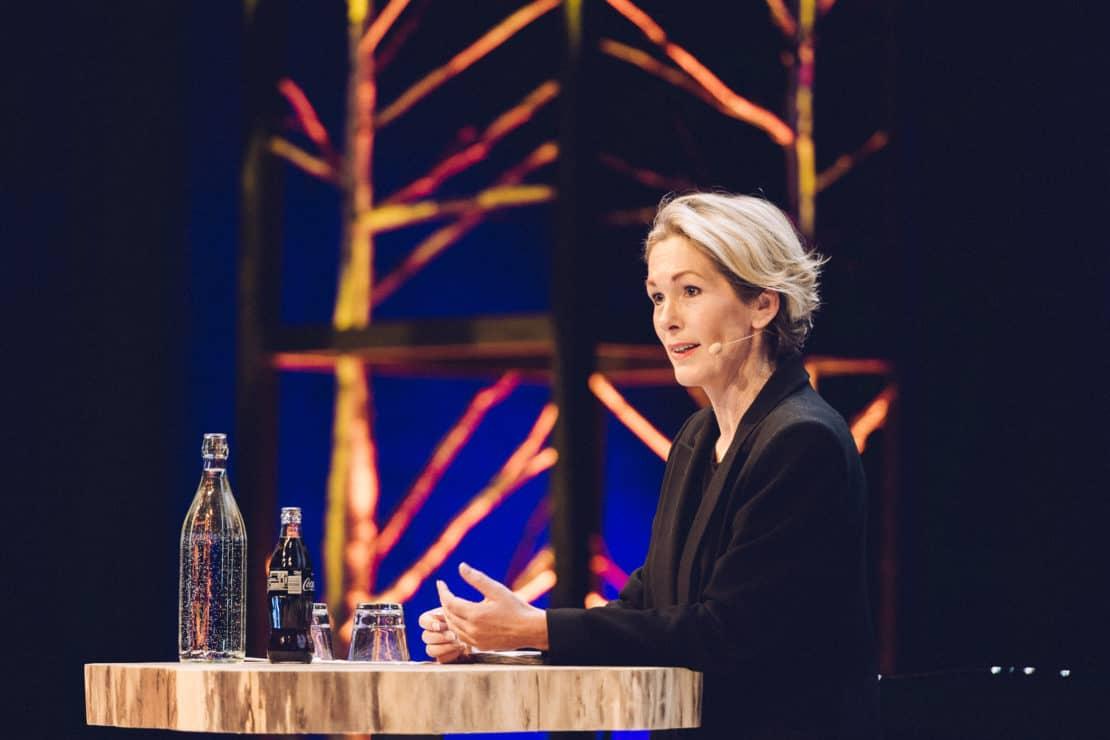26Mar2018
Alex Osterwalder addresses his audience at Nordic Business Forum with a bold question: how do you create invincible companies? The answer, according to Osterwalder, is found in the competitive advantage of business models. He demonstrates this using a video, which explains that modern successful companies have understood that superior business models translate to superior business and that it’s not enough to compete using products, services, and technology alone. With this in mind, Osterwalder outlines the different levels of business model strategies.
Starting at Level 0, these companies focus mainly on product and technology related services and build great value propositions with a strong product-market fit. Some companies at this level, which the video labels “The Oblivious”, are unaware that combining their product with a smarter business model strategy would make them more competitive.
Level 1 organizations are “The Beginners”. These companies realize that products and technology are not enough to carve a competitive edge in their market and are beginning to explore new business model strategies.
Level 2 companies are “The Masters” and know how to build outstanding business models. They understand that success is found beyond covering all the traditional components of the business model. As Osterwalder describes, these companies think of their strategy “as a continuous story” that runs through their business, in which every piece of the story reinforces the business model.
Finally, “The Invincibles” operate at Level 3. Not only have these companies already built outstanding business models, but they continually think of and build new ones. They don’t settle on one strategy; they’re not satisfied by one set of results. Osterwalder explains that these companies are constantly evolving their strategy, testing and validating, in the name of progress. Apple and Amazon are two examples of these invincible organizations.
Business model portfolio
Known as the creator of the Business Model Canvas, Osterwalder states that business model portfolios are key tools for successful growth and development of an organization – from startups to existing companies. The focus of the company needs to change depending on the needs of the business. Aside from culture, Osterwalder thinks it is vital startups are led by people who can deal with risk and ambiguity. Whereas, existing companies need to make sure they have executors who can drive the business forward. By extension, great companies are built on a partnership between the two.
Osterwalder says that the nature of mature businesses is that they have “a death or disruption risk axis.” Those companies, such as the world’s largest food and beverage company Nestlé, usually thrive because they are continually assessing and changing depending on where the risks and disruptions are. When Nestlé realized the popular mindset shift towards sugar, making it the enemy of a healthy diet, it sold a lot of that side of its business to Ferrero Rocher and focused more on the healthier products in its portfolio.
Where things really change is in the innovation portfolio. Quoting serial-entrepreneur Steve Blank, Osterwalder claims that there is a lot of innovation theater taking place; people still haven’t been equipped with the power to make a real difference, so they put on a show. While an idea might be great, it needs testing. Otherwise, you end up with a business death risk. For Osterwalder, Nespresso highlights this well. The company’s initial product almost forced it out of business, and it took almost two years and a change of leadership to get the product right. It didn’t test. Effective Lean startups thoroughly test a new business idea to reduce the uncertainty around the risk of the business idea. Metered funding is a great tool to do this.
Measuring and testing
How can a business know whether they have significantly reduced the risk to the business? “Measure,” says Osterwalder. Companies need to test and de-risk the desirability, viability, and feasibility of a new business idea. Test desirability first: Have you validated the pains and gains of your customer? Only once you have done that, do you come up with the solution, which is the second thing that needs to be tested. Following that, customer acquisition needs the same de-risking treatment. Osterwalder stresses the importance of being specific about what you will measure in order to de-risk an idea. If a company knows how to reach their customer, which channels to use, and what it will cost to acquire them, then they can measure retention. Feasibility testing is where a company needs to look at whether they can build or make the product they want to sell. Can technology and resources be managed and easily accessed? The last thing to know is whether the company can manage large-scale production, as well as revenue and costs. If all these factors have been taken into account, then you’ve de-risked feasibility successfully.
However, traditional managers can’t do this. You need a different team with an entrepreneurial edge. Osterwalder suggests companies establish an “explore* portfolio and accept that failure is part of the process. “You can’t pick the winners without picking the losers,” he says. What is key, though, is that an idea fails fast without costing a fortune.
To keep innovation alive and to have a pipeline of new business ideas that can then be driven forward, Osterwalder advocates that organizations need to keep a balance between the risk and disruption management and the explore portfolio. “It is a continuous dance and reinvention. If you don’t have that, you will die as a business,” Osterwalder says.
This article is a part of the Executive Summary of Nordic Business Forum Sweden & Norway 2018. Get your digital copy of the summary from the link below.


